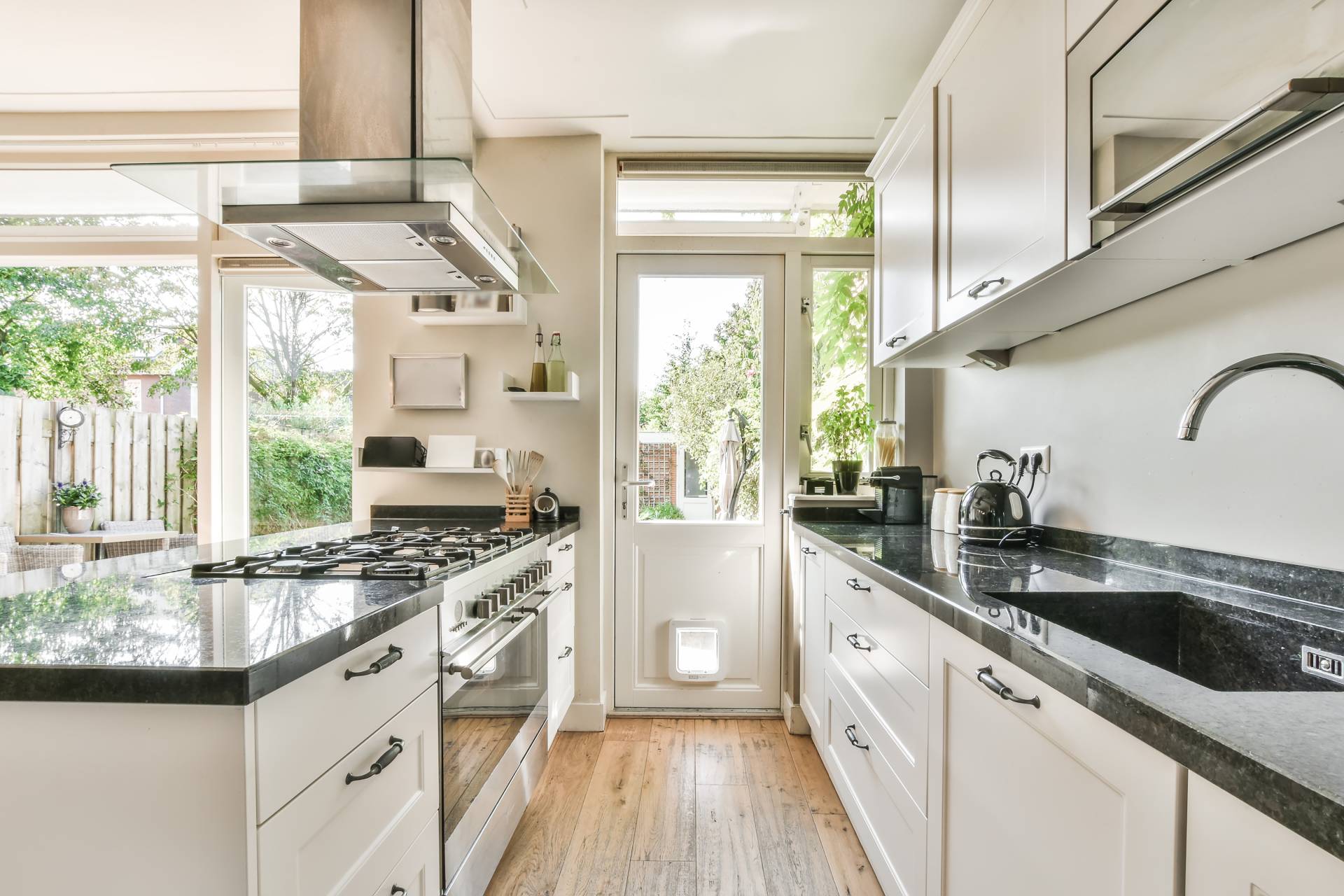With practically every idea turning into a DIY project, why should Painting be considered any different? Painting your home, if done right will undoubtedly freshen, re-vamp and add value to your home. This long time renovator, who started as the quintessential DIY’er can attest to the fact that of the 4 main renovations that create the biggest impact on your home. Housr Painting is the quickest and easiest with the least cost to you.
Going on a tangent here, but it’s important to know those 4 key remodels. They are, in order of cost —- Switches and plugs, Door handles, Painting and Flooring. Generally, other renovation projects such as Basements, Kitchens and Bathrooms are not just high cost, but take major planning and are difficult for a Do It Your Selfer. However, Painting, done as a DIY project will create a huge impact on the overall look of the home.
Painting a house can be fun, but can also be tiring and challenging to complete. House painters who are looking to paint their houses are always looking for effective tips and tricks to simplify this task.
If you’re planning to put on a painter’s hat and get started with a DIY paint project, you’ve come to the right place. In this guide, we’ll list some of the most helpful tips for painting so that you can use them to paint your house like a professional. And don’t worry. Even if you plan to hire a professional painter, these tips and tricks can aid you in directing the Pro to get the job done correctly.
Essential Painting Tips for House Painters
Whether you just want to paint one wall or your entire home, whether you’re an amateur or a professional, it doesn’t matter… These effective tips and tricks will help you make your paint job a success.
1) Invest in good-quality paint and materials
What can make a professional paint job look effortless, and flawless and get you that result you can be proud of day in and day out? Well, according to most house painters and this professional painter, it’s the use of top-quality paints, brushes, and roller covers.
A good quality paint achieves several results. First, and most important, it saves you money! A high quality paint will typically achieve the same result as a cheap paint, but in fewer applications. The difference between having to apply 2 coats to 3 or more coats over a 2500 square foot home can equate to many gallons of paint. Also, a high quality paint will provide excellent coverage so that you will save time and paint on reapplication. So, if you want to paint your house like the best house painters, you must invest in the best materials!
When I started painting, I bought the cheapie cheapie brushes at the corner store, and boy did I learn the hard way what a quality brush can mean in the long run. You might not think so, but there is a huge difference in final paint quality between one brush to another. Don’t buy your brushes at the dollar store, go to a professional paint store and invest in good quality brushes. Choose an angled synthetic bristled brush if you’re using paint that can be cleaned with water. If you’re applying an oil based varnish or paint, use a natural bristled paint brush. Check in for our blog on “how to choose the right paint brush” for a more detailed explanation.
2) Do an in-depth visual inspection and prepare the surface
Before you clean the wall, look for any signs of scratches, gouges, cracks, large holes, or peeling on the wall. It is essential to patch a wall properly before you start painting on it. Use fine-grit sandpaper to smooth over the imperfections and minor scratches or cracks.
Also, it’s best to scrape off the old, peeling paint on the walls with the help of a paint scraper. Feather and smoothen the edges of scraped paint with a fine-grit sandpaper. This will give you a professional and smooth-looking paint finish, and is critical to understand how to paint walls.
Any peeling, flaking, or cracked spots should be lightly scraped or sanded and then properly rinsed before applying new primer and paint. On occasion the fresh coat will pull the old paint loose. Try to avoid this by light scraping or sanding.
Also, look for greasy spots on the wall, wash them with soap, and rinse with clean water. Make sure to use a damp cloth and wipe the walls so that the new paint has a dust-free and clean wall surface to stick to.
3) Choose the correct roller nap
The length of fibers on a paint roller is known as “nap.” Different surfaces call for different roller naps. If you have very smooth and seamless walls with no texture, a very short roller nap will be suitable.
To obtain the best results, you might want to stick with an 8-10mm length. Since interior walls mostly have light to moderate texturing, they can benefit from a 12mm roller nap.
For walls with greater textured surfaces, you should go with a 10-16mm roller nap. Do not opt for an 18-25mm roller naps for interior walls as they are mainly reserved for things such as outside stucco.
4) Box your paint
Choose the right paint salesperson who can guide you and give you an accurate estimate of how much paint is needed so you can purchase it at once. Rather than using one gallon at a time, combine all the paint in a container and mix it well. This is called boxing your paint, as it maintains the consistency of color from start to finish. You can also buy paint in pails, which are typically 5 gallons volumes
5) Choose a Dry day to paint
It goes without saying that if you’re painting your home’s exterior, try to do it on a dry sunny day. If the forecast calls rain anytime soon, it is best to schedule your paint job for later. In general, it is highly advised for house painters to paint their houses on a drier, sunny day. If there has been rain, wait a couple of days so you are working on a dry surface. The perfect level of humidity for painting is between 40 to 50%. Any higher, you will end up with unwanted spots or streaks in your paint. If you paint on colder and humid days, the paint will develop condensation. If you paint on an extremely dry day, the paint will dry too fast and form bumps, cracks, or blisters.
6) Cover furniture and floors before starting
It is highly advised for house painters to cover all their belongings before they start painting. Use drop sheets for covering your floors, use plastic wrap for furniture and cardboard paper if you are painting around new floors or tiles.
Don’t leave anything uncovered as paint spills will happen… sort of like death and taxes! Don’t get stuck with paint spilling on valuable furniture and belongings. Don’t skip this step, it’s quick and easy, but an incredibly important step. Believe you me as there is nothing worse than having to replace your carpet or bed-frame because the paint on it can’t be cleaned.
7) Choose self-priming paint
Most house painters prefer using a primer before applying a coat of paint. For starters, primer serves two essential purposes:
– It provides better and smoother adhesion for the paint color. As an example, primer is like using a foundation for prepping the skin and face before applying makeup.
– It seals the surface of the wall.
Still, most homeowners who take up this DIY paint project do not need to invest in a primer. Instead, they can simply go for self-priming paint, which is a better and more convenient option. Self-priming paints tend to seal the wall as you apply the color.
Hence, eliminating the process of getting primer and priming the walls can save house painters considerable time and money. A separate primer is optional if you paint over existing paint, not drywall.
8) Work with a wet edge and paint from top to bottom.
Once you start rolling, make sure to use a technique to give the walls consistent coverage. The key to maintaining a consistent and seamless paint coverage is keeping a wet edge, meaning every stroke of the paint roller must overlap with the former one.
Start in one corner, and work your way on the wall from top to bottom, gently moving your roller, so you move in slow increments. You may also need to frequently refill your paint roller and roll it in paint again before it fully dries. Backtrack to reapply the paint over a visibly thin area, a streak, or a bubble.
9) The cut-in technique
An indispensable technique on how to paint walls is the cut-in technique. Cutting-in refers to applying the paint right up to the borders of the surface of the wall that won’t be painted and filling in spots where the paint rollers cannot reach. Professional painters always prefer to cut in the edges instead of masking tape.
This is because this technique is more affordable, convenient, cleaner, and less wasteful than using tape. For this, you will need to dip a paint edger tool or an angled brush into the top of the paint.
Lightly draw the paintbrush along the wall and up to the surface that won’t be painted. Use caution while doing this step, and don’t rush. Also, always keep a cloth rag handy to instantly clean up in case of a mistake.
10) Prepare for the next day
Professional house painters see their tools as an investment and take good care of them. After each day of painting, make sure to clean your brushes and if you’re super budget-conscious, your rollers. Clean your brush in cold water, and spin the brush every couple of seconds to wring out the paint. You can also buy a paint-cleaning wire brush to scrape out any paint caught between the bristles. On occasion you won’t have time to clean the brush, so just grab a plastic bag and wrap up your brush until you can get to cleaning it. Cleaning your roller is generally done in the same way. You can use the curved edge of your scraper to push down on the roller and squeeze out the paint. Rollers hold lots of paint, so before using water, squeeze out the paint into your paint can.
11) Wear appropriate clothing
Professional house painters also dress the part! House painters wear white and look good at it! All joking aside, wearing white serves a number of purposes. White is a symbol of cleanliness and leaves the impression the painter is going to do a nice, neat, and tidy job without getting paint all over himself and everything else. Painting can be hard, sweaty work, especially outdoors during hot, sunny weather. While dark clothing absorbs heat, white reflects it, much the way white paint keeps a home cooler. Shirts should be long-sleeved to protect arms from drips. Choose lightweight breathable material such as cotton and avoid anything too loose that could easily brush up against wet paint. Opt for old pants with a relaxed fit; a tight pair will restrict your movement. Overalls, as well as carpenter’s pants, are ideal because they’re roomy and have multiple pockets for tools.
I hope you’ve enjoyed these tips and they help you get closer to becoming the house painter you’ve wanted to become. Remember, action is the best way to get better, so pick up that brush, get your overalls, and get Painting!




